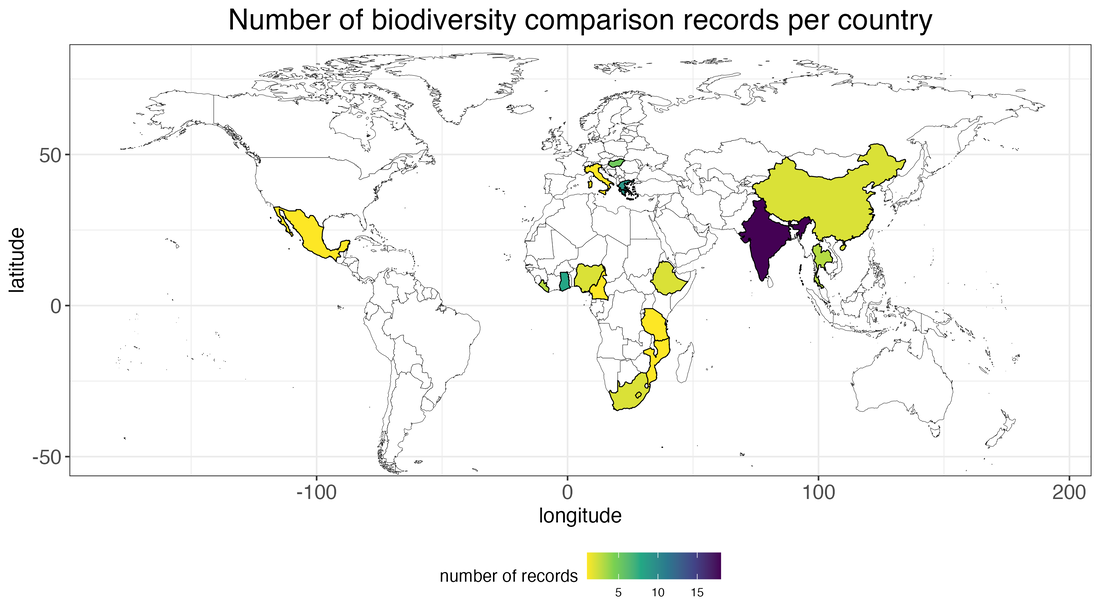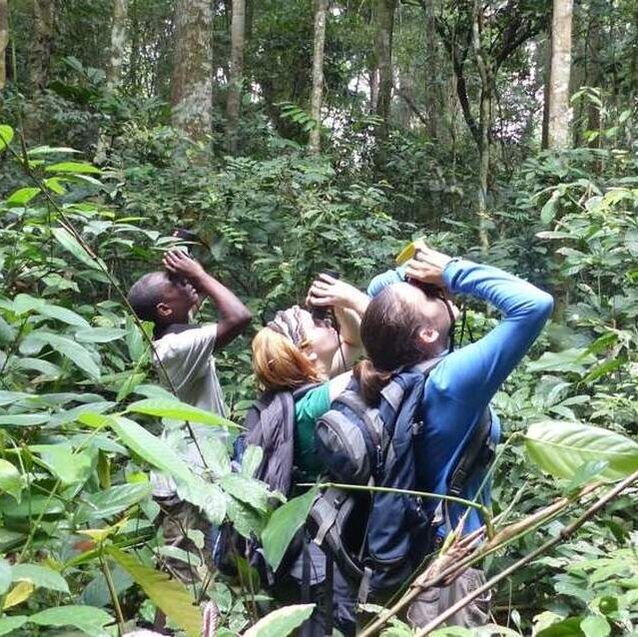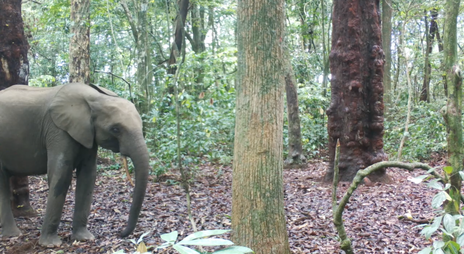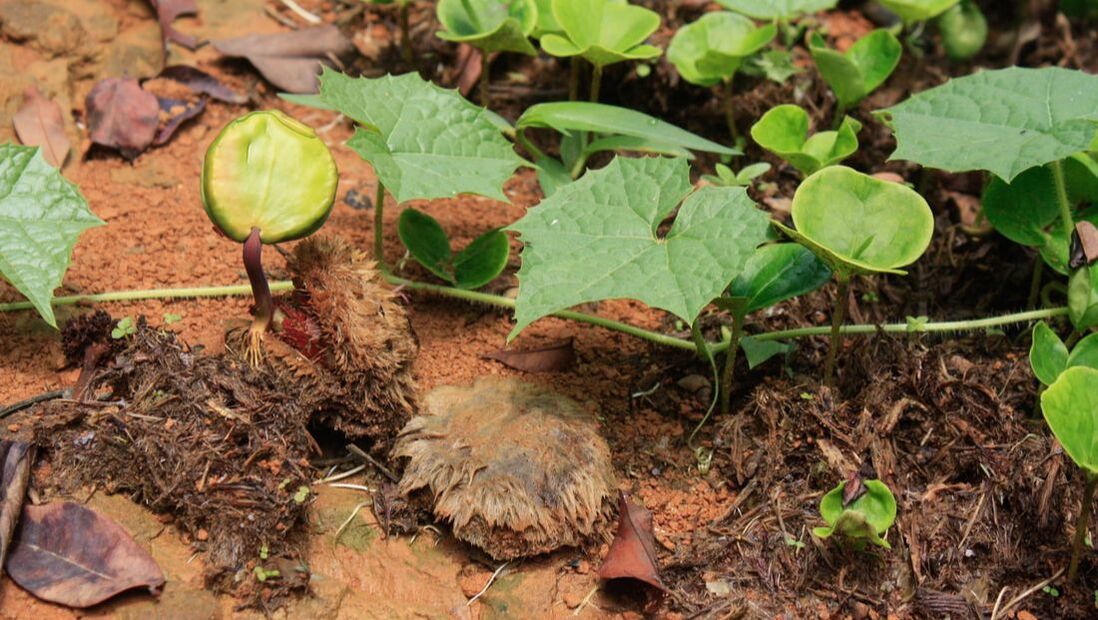Land management impacts biodiversity, structure, and ecosystem function
|
A cut tree in a logging concession in Gabon.
|
Selective logging is often hailed as a land-use compromise. In my PhD research, I explored the impacts of low-level selective logging in Gabon. I investigated how selective logging -- a widespread, but localized disturbance -- can alter patterns of tree & liana regeneration, growth, and survival and shift composition, structure, and function of vegetation communities in a tropical rainforest. To do this, I set up a network of vegetation plots that measured seedling, sapling, and adult trees and lianas across a chronosequence of logged forest.
Our initial vegetation censuses found that low-intensity selective logging had relatively small effects on understory forest structure and diversity (link), and that logged forests had some composition differences compared to unlogged forests, but that logging didn't have negative impacts on some key ecosystem services (link). We also found negative impacts of selective logging on seedling dynamics up to 4 years post-logging, and most of those impacts disappeared 14 years post-logging (link). |
|
Recognizing the conservation value of small-sized protected areas and community-managed areas can be a challenge. Sacred forests — forests with religious significance to local communities — are one unique type of managed ecosystem that can provide refuge for biodiversity in fragmented, human-modified landscapes. However, sacred forests' contribution to biodiversity conservation is often undervalued, because of a lack of quantitative evidence about how sacred forests impact biodiversity. To address this, we conducted a meta-analysis that compares sacred forests with nearby non-sacred forests (i.e., control areas), and found that sacred forests harbored similar levels of biodiversity as nearby forested areas. (link) |
Countries with sacred forest biodiversity comparison data used in a global meta-analysis. Sullivan et al. 2024
|
Environmental variation shapes plant communities
|
Abiotic variation can impact the reproductive success and functional trait variability in plant communities.
Currently, I am exploring long-term trends of tropical reproductive phenology (the timing of flowering and fruiting of tree species), and how shifts in phenological patterns can have cascading impacts in tropical ecosystems, affecting resource availability, impacting animal populations, and creating challenges for management and conservation of tropical forest ecosystems (link). Previously, I studied how climate affects plant communities by exploring trait shifts across climate & elevation gradients. In the Brazilian cerrado, I described how macroecological patterns of leaf trait variation across precipitation and temperature gradients. We explored how drip-tip incidence in Cerrado species is affected by climate and species distribution patterns (link). Additionally, I assisted in amassing a dataset of herbaceous plant traits across a climate & elevation gradient in the Gongga Mountains, Sichuan, China (link). |
Phenology monitoring at the Ipassa Research Station, Ivindo NP, Gabon.
|
Plant-animal interactions and ecological processes
|
Elephant approaching a fruit tree in Wonga Wongue, Gabon. Photo courtesy of Liam Jasperse-Sjolander.
.Seedlings sprouting in an elephant dung pile in a forest in the Monts de Cristal landscape in Gabon.
|
Plant-animal interactions are important ecological processes that shape wildlife behavior and ecosystems in ways that can impact biodiversity, vegetation structure, carbon storage, and ecosystem functioning. Currently, I am investigating elephant diet & selectivity in forest elephants in Gabon and savanna elephants in Rwanda. During my PhD, I found that forest elephant trails in the understory of logged and unlogged forests in Gabon had both negative impacts on seedling survival & positive impacts on seedling recruitment (link). Previously, I have contributed to research investigating how the impacts of megaherbivores, such as elephants, can affect the structure and diversity of understory plants around elephant-dispersed tree species in Congo Basin forests (link). One of my first research projects explored how the seed fate of a bird- and monkey-dispersed species (Virola surinamensis) impacted reproductive success on BCI in Panama (link). |





